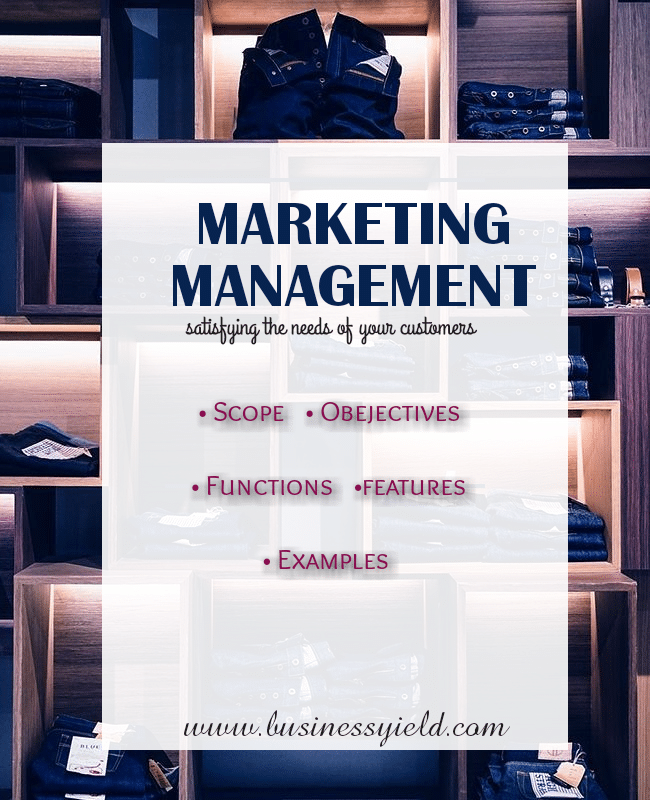There is only one chance to establish a good first impression during onboarding. A simple onboarding procedure with a bit of paperwork and an employee handbook was enough for many businesses to get by before the pandemic. Many companies have lost potential customers and clients due to their poor onboarding process. Therefore, we don’t want you to make the same mistake and have researched the best onboarding practices. Keep reading to know more about employee onboarding best practices.
Onboarding Best Practices
One of the final phases of the hiring process is onboarding. Each employer’s onboarding procedures may vary in formality and structure, but a successful one will be advantageous to both sides.
As a result, new hires will be able to start contributing to your organization swiftly and will be able to quickly adapt to the abilities and attitudes necessary for their new position.
Our best recommendations for doing it correctly are shown below:
#1. Regular communication
From when they accept the offer to when they start working for you, it’s critical to keep your new hire interested. They may feel more at ease and become enthusiastic about your business and department.
The top applicants will naturally want to get started right away, so think about anything they could be doing before they start working for you that would be helpful to them in their early days in the post.
#2. Think about enrolling online
The use of an online approach has various advantages. Forms can be completed in advance and entered into your system, saving time on the first day and allowing the new employee and their manager to focus on more critical tasks. Your onboarding procedure can be different if you employ a full-time remote worker.
#3. Be aware of the arrival date and plan.
A new employee wants nothing more than to show up on their first day and discover that they were not at all expected or that their management had not adequately planned their arrival.
This presents a poor, careless, and disorganized image of the business. Ensure all passes, workstations, computer software, accounts, and clearances are prepared and that you are informed of when they are expected to arrive.
#4. Make an introduction
An introduction to the company and a basic role-specific induction should be given on the first day. Consider additional skills required, such as health and safety procedures, as you are required by law to ensure that your staff is knowledgeable in these areas.
#5. Choose a mentor or buddy.
If it isn’t already a part of your onboarding procedure, think about designating a buddy or mentor. The new employee will feel comfortable asking “everyday” questions to the more seasoned peer, which they might not want to ask their boss.
Employee Onboarding Best Practices
#1. Before your new hire’s first day at work, begin onboarding
Many businesses make the mistake of delaying orientation and onboarding until the new employee’s first day of work. But frequently, it will take days, weeks, or even months from receiving a job offer until your new hire starts their new work.
#2. Establish fantastic hiring and welcoming procedures
An excellent first impression can be made by providing a great hiring experience. However, that hiring process involves much more than mailing your new team members a coffee mug or a list of business regulations.
Consider creating a new hire checklist that includes some of the following new hire practices to assist your new employee in getting off to a quick start and prepare them for not just their first day in their new position but also for their first month:
- Send a call and an email to greet the new employee.
- Send a welcome kit to new employees.
- Set up the work equipment and resources for the new hire.
- Create a schedule and program for an orientation.
- Give opportunities to greet coworkers
#3. Include senior leaders in establishing organizational culture.
Your human resources department is not the only one in charge of onboarding. The development of a new employee onboarding program will frequently involve HR specialists, but executing onboarding activities is the duty of the entire organization, including team members, supervisors, and senior leaders.
Involving a senior leader, such as a founder, gives that person a chance to discuss corporate principles and acceptable behaviors while also helping new employees grasp the company culture and history.
#4. Making use of onboarding software
From completing recruit paperwork to conducting new hire orientation and training programs, an efficient onboarding process involves a vast variety of jobs and activities.
Many HRIS software companies offer automated, integrated onboarding solutions that reduce the need for paper-based forms, do away with redundant data entry, and streamline the procedure.
#5. With your employee, establish a living trust.
Whether it’s between team members or a manager and a member of their team, a trust agreement serves as the cornerstone for a productive working relationship (s). It should be jointly developed, documented, evaluated, and updated regularly as a living document.
New Employee Onboarding Best Practices
Because it prepares individuals for their roles, onboarding is crucial for new hires. Making sure their transfer goes as smoothly as possible is your responsibility as a leader. Healthy onboarding procedures are the key.
You can keep your team content and productive right out of the gate by adhering to these five employees’ onboarding best practices.
#1. Learn the workings of your new employee.
Because each person is unique, it’s essential to comprehend the most excellent method for integrating the recruit into the workforce. Find out what they hope to get out of the job, how they prefer to be handled, and how they approach work in general.
By making any necessary improvements that will better assist their transfer, you may facilitate onboarding after understanding these factors.
#2. Describe to them the essential team members and departments.
Introducing newly hired talent to seasoned workers is one of the most crucial components of onboarding. Think about the people they employee will frequently collaborate with. Make sure they meet essential individuals, including team leads.
#3. The intensity of your workout should be appropriately balanced.
Thinking about how much training you’re giving new hires before you onboard them is critical. Each has its drawbacks, and it can be simple to overtrain or undertrain.
They overload the personnel with knowledge when there is an excess of training. The human brain cannot retain so much information, contrary to what you believe would help them catch up more quickly.
On the other hand, inadequate training is also ineffective. By telling staff to handle everything independently with little assistance, you are effectively telling them this.
#4. Be sure to use constructive criticism
You shouldn’t anticipate perfection from a new employee because nobody is flawless. To encourage learning via failure, it is helpful to establish a culture. This is part of giving them comments that will prepare them for the long run.
#5. Maintain your dialogue.
Throughout the onboarding process, you must follow up with your new hires on several occasions. Unless you directly ask, you can’t tell how a new hire is adjusting.
Inquire about their progress, areas of need for assistance, and any questions they may still have. Make sure to give their opinions a fair hearing, as this will inspire them to offer suggestions that can ultimately improve your company.
Customer Onboarding Best Practices
#1. Build your clients a clear path map.
Create a clear path for your clients to travel down as a first step. During the onboarding process, nothing could be more depressing than having your client feel unclear about what the next step is going to be. For your clients, create a well-thought-out experience.
#2. Recognize the needs of the customer
If your clients have experienced an emotional rift during onboarding, it might be because you aren’t paying close attention to what they have to say. Businesses must be aware of the requirements and problems of their clients. Pay attention to the onboarding components they don’t understand and which ones they find unclear. Then concentrate on making that feature of the experience better or making the explanation that goes along with it more straightforward.
#3. Establish goals and deadlines.
Pre-setting a client’s expectations is a good idea before they begin using a product or service. By doing so, you can construct a clearer picture of what you will give them and have a decent idea of what they want to do with your offering.
#4. Possess a problem-solving mentality.
During the onboarding process, not everything will go according to plan. Even if you adhere to the customer onboarding template, there may still be some items that you overlook because of contextual variances with your client.
Perhaps your customer’s address is beyond the range of your 3PL supplier, or the service they are attempting to use is not what they require. A problem-solving approach is helpful in situations like these.
#5. Automate routine actions
One of the easiest methods to speed up an onboarding process is to develop a repeatable client onboarding framework. Every time an onboarding has been done on the fly, time is lost for both the business and the customer. Automate what can be automated, then.
Virtual Onboarding Best Practices
#1. Starting the onboarding process early
Remote businesses frequently postpone beginning the onboarding process until the employee’s first day. In our opinion, the best course of action begins well before your new team member reports for duty.
As soon as the hiring procedure for new staff is over, send out a welcome package.
#2. Make and distribute an onboarding schedule or agenda.
In addition to delivering swag, we advise you to include an agenda in your welcome packet that details the timeline for your new hire’s onboarding and first two weeks.
This calms their initial anxiety by giving them a sneak peek at what’s coming up (without overwhelming them).
#3. Give simple tasks to encourage confidence and ease
Prepare a few simple activities for your new hires to accomplish in the beginning to help them gain confidence before any substantial work is required. Provide them with HR forms to complete, ask them to view a quick video, set up their Slack and PM software profiles, and more.
#4. Plan virtual training
Consider adding a couple of virtual training sessions to your new hire’s schedule. You can provide them links to internet tutorials, internal training films, or Google Slides presentations for presentations during training. They can catch up on their schedule with the aid of these.
#5. Plan online meetings with individuals and groups to introduce the team
Everyone can meet their coworkers virtually in a less daunting setting. The schedule should include a few video calls, starting with smaller groups of workers they will interact with often.
What Are The 5Cs Of Onboarding?
The 5Cs of onboarding are:
- Compliance
- Clarification
- Culture
- Connection, and
- Check-back
What Are The 3 Phases Of Employee Onboarding?
When HR teams use the term “onboarding,” they essentially imply everything that takes place to get a new hire started in their role after they sign an offer letter. These various activities often fall into three overlapping phases:
- Administration
- Orientation, and
- Enablement.
What Does a Good Client Onboarding Look Like?
You maintain customer engagement with a good onboarding process. Their successful usage of your product will result from your assistance in helping them comprehend and experience the value it offers. Still, more importantly, it will provide them a motivation to return and use it repeatedly. Increasing trial conversions.
How Do I Make an Onboarding Checklist?
To make an Onboarding Checklist, follow these steps:
- Analyze the position’s requirements.
- They should divide the checklist into sections.
- Make a list of prerequisites for hiring.
- Make a list of the duties for the first day.
- Give them tasks to complete throughout their first week.
- After the first month, check in with them.
How Can You Improve Onboarding Customers?
It should be easy and flexible to onboard new employees. Customers’ favorable perceptions of your brand and their likelihood of becoming customers are strengthened when they witness the speed, comfort, security, and convenience you exhibit during onboarding.
Onboarding Best Practices FAQs
What characteristics define a successful onboarding system?
A successful onboarding process strikes a balance between imparting knowledge, creating excitement, and fostering relationships. Businesses may provide new hires with the knowledge, contacts, and resources they require to feel at ease and confidence enough to perform an excellent job by carefully organizing the onboarding process.
Who should handle the onboarding process?
The recruit manager is the ideal person to provide the new hire with the necessary training to succeed in their position, which is one of the most crucial components of onboarding.
Conclusion
You can see that the onboarding process is essential after the hiring process. Follow the steps in this article so that your employees and clients can feel at home and let them have a good impression of you as an HR.
- Employee Of The Month; Best Practices, Templates & Ideas
- Contract Management Systems; 2023 Best Software
- The Top Best HR Systems For Small Business in 2023 ( UPDATED)
- EMPLOYEE ONBOARDING: What You Should Know About The Entire Onboarding Process
- New Hire Onboarding Best Practices In 2023






